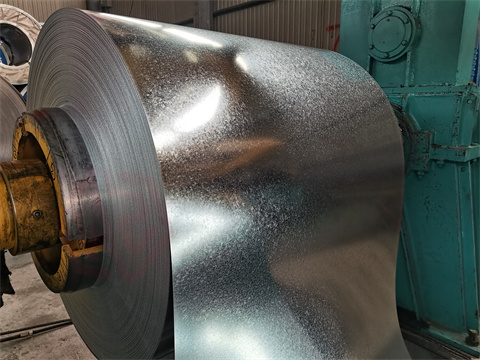Review of Different Types of GI Sheets
Contents |
[edit] Introduction
Galvanized iron sheet is one of the most commonly used steel materials in the world for homes, businesses, buildings, industries, automobiles, and so on. It is steel that has been coated with zinc to prevent corrosion and prolong service life.
[edit] Manufacturing method
[edit] Hot dipped galvanized sheet (HDG sheet)
HDG steel sheet is mainly produced by the continuous hot-dip galvanizing process. That is, the steel will be put into the molten zinc bath at temperatures of 500 degrees to form a close alloy film. This process provides a thicker zinc coating, about 30-275 g/m2, and can freeze into crystallized zinc spangles. They are mainly used in outdoor and harsh environments, including construction, machinery, infrastructure, mining, etc.
[edit] Electro galvanized sheet (EG sheet)
EG sheet is also called cold galvanized steel sheet, in which a layer of zinc is bonded to steel in order to protect against corrosion. The zinc coating will be applied by electro-deposition during the continuous electrolytic coating process at room temperature. It offers a thin but uniform zinc coating, about 10-50 g/m2. Its corrosion resistance is not as good as that of hot-dip galvanized steel sheet. Electro galvanized sheet is commonly applied in indoor places and environments that require less corrosion resistance but better aesthetics. Industries include automobiles, furniture, home appliances, vessels, electronic equipment, commerce, etc.
[edit] Corrugated galvanized sheet (CGI sheet)
This takes GI sheets as material and then profiles them into corrugated patterns with a roller mill, which will increase the bending and malleability strength of steel. They come in different forms such as trapezoidal, wavy, ribbed, and tile designs. Sometimes, it is also in the form of a flat sheet.
[edit] Plain GI sheet
Plain galvanized steel sheet is a metal sheet coated with protected metallic and organic zinc coatings, with no extra deformed design. Extensively used in the automobile, transportation, construction, home appliances, and civil engineering industries. It can work as the trunk, back panel or boards. It can be further processed for other uses, such as PPGI sheet/coil, corrugated GI sheet, fencing, steel piping, etc.
[edit] Related articles on Designing Buildings Wiki
Featured articles and news
RTPI leader to become new CIOB Chief Executive Officer
Dr Victoria Hills MRTPI, FICE to take over after Caroline Gumble’s departure.
Social and affordable housing, a long term plan for delivery
The “Delivering a Decade of Renewal for Social and Affordable Housing” strategy sets out future path.
A change to adoptive architecture
Effects of global weather warming on architectural detailing, material choice and human interaction.
The proposed publicly owned and backed subsidiary of Homes England, to facilitate new homes.
How big is the problem and what can we do to mitigate the effects?
Overheating guidance and tools for building designers
A number of cool guides to help with the heat.
The UK's Modern Industrial Strategy: A 10 year plan
Previous consultation criticism, current key elements and general support with some persisting reservations.
Building Safety Regulator reforms
New roles, new staff and a new fast track service pave the way for a single construction regulator.
Architectural Technologist CPDs and Communications
CIAT CPD… and how you can do it!
Cooling centres and cool spaces
Managing extreme heat in cities by directing the public to places for heat stress relief and water sources.
Winter gardens: A brief history and warm variations
Extending the season with glass in different forms and terms.
Restoring Great Yarmouth's Winter Gardens
Transforming one of the least sustainable constructions imaginable.
Construction Skills Mission Board launch sector drive
Newly formed government and industry collaboration set strategy for recruiting an additional 100,000 construction workers a year.
New Architects Code comes into effect in September 2025
ARB Architects Code of Conduct and Practice available with ongoing consultation regarding guidance.
Welsh Skills Body (Medr) launches ambitious plan
The new skills body brings together funding and regulation of tertiary education and research for the devolved nation.
Paul Gandy FCIOB announced as next CIOB President
Former Tilbury Douglas CEO takes helm.
UK Infrastructure: A 10 Year Strategy. In brief with reactions
With the National Infrastructure and Service Transformation Authority (NISTA).























